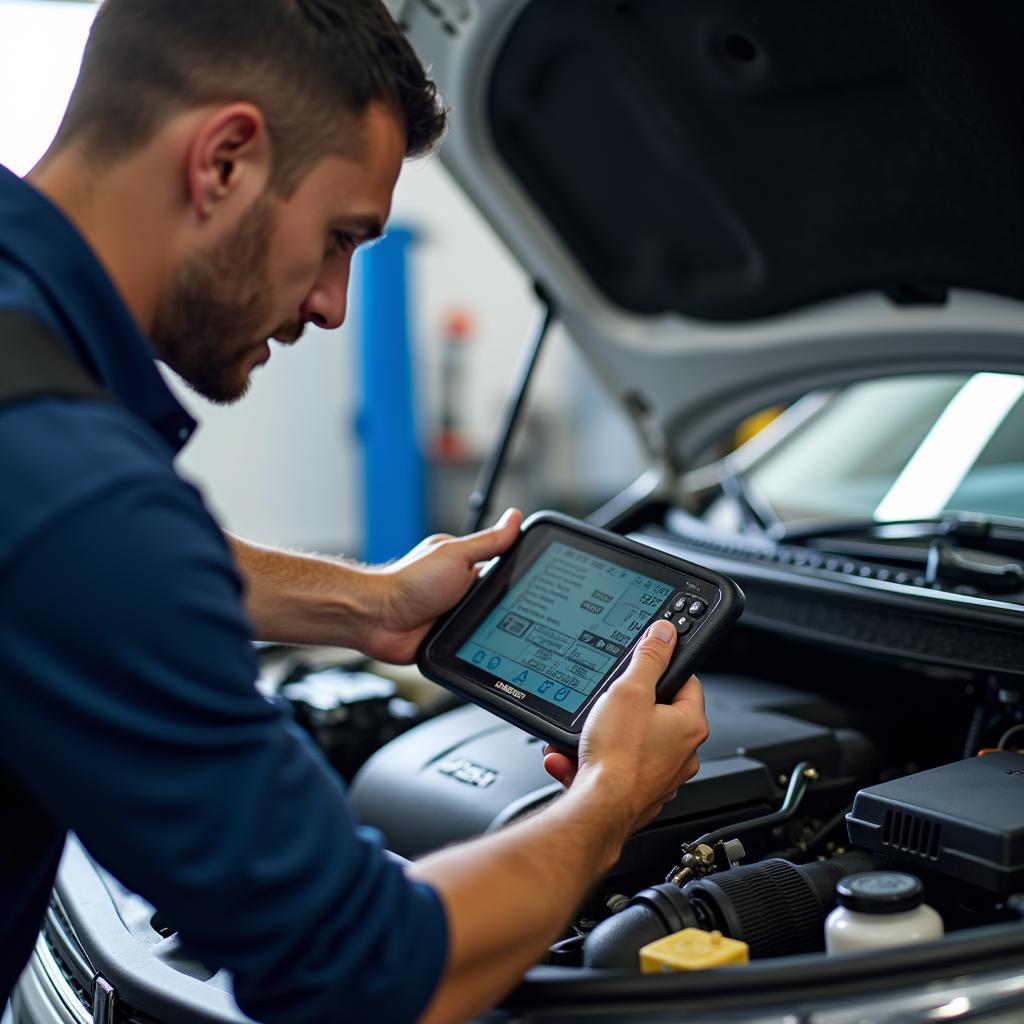Is Midterm Service Recommended For Cars? Regular maintenance is crucial for keeping your car running smoothly, but is a midterm service really necessary? This article will delve into the importance of midterm car servicing, exploring its benefits, what it entails, and when you should consider it. We’ll help you determine whether a midterm service is right for your vehicle and your driving habits.
What is a Midterm Service and Why Should I Care?
A midterm service falls between a standard oil change and a full annual service. It’s a preventative maintenance check designed to catch potential issues before they become major problems. Think of it as a health checkup for your car. While regular oil changes address basic lubrication needs, a midterm service dives deeper into your vehicle’s systems. Ignoring midterm services can lead to costly repairs down the line and potentially compromise your safety on the road.
Benefits of a Midterm Service
- Early Problem Detection: A midterm service can identify minor issues like worn brake pads or a failing battery before they become major safety hazards.
- Extended Vehicle Lifespan: Regular maintenance, including midterm services, helps keep your car in optimal condition, contributing to a longer lifespan.
- Improved Fuel Efficiency: A well-maintained engine runs more efficiently, potentially saving you money on fuel costs.
- Enhanced Performance: Midterm services ensure that all systems are working in harmony, leading to better overall vehicle performance.
- Resale Value: A well-documented service history, including midterm checks, can significantly increase your car’s resale value.
When Should I Consider a Midterm Service?
The frequency of midterm services depends on several factors, including your vehicle’s make and model, your driving habits, and the manufacturer’s recommendations. Generally, a midterm service is recommended every 6 months or 7,500 miles, especially for vehicles driven in harsh conditions or for long distances.
Identifying the Need for a Midterm Service
- Unusual Noises: Any new or unusual noises coming from your car, such as squeaks, rattles, or grinding, could indicate a problem that needs addressing.
- Warning Lights: Never ignore warning lights on your dashboard. They are often the first sign of a developing issue.
- Performance Changes: If your car feels sluggish, hesitates when accelerating, or experiences decreased fuel efficiency, it might be time for a midterm service.
- Mileage: Keep track of your mileage and consult your owner’s manual for recommended service intervals.
What Does a Midterm Service Include?
A typical midterm service encompasses several key checks and replacements, including:
- Oil and Filter Change: This is a standard part of most services and is essential for engine lubrication.
- Fluid Top-Ups: Brake fluid, coolant, power steering fluid, and windshield washer fluid are checked and topped up as needed.
- Brake Inspection: Brake pads and rotors are inspected for wear and tear and replaced if necessary.
- Tire Rotation and Pressure Check: Rotating tires helps ensure even wear and tear, while proper tire pressure improves fuel efficiency and handling.
- Battery Test: The battery’s voltage and condition are checked to ensure it’s functioning correctly.
- Belt and Hose Inspection: Belts and hoses are examined for cracks, leaks, or signs of wear.
“Regular midterm servicing is an investment, not an expense,” says John Smith, Senior Automotive Technician at CarTech Solutions. “It’s like brushing your teeth – preventative care saves you from bigger problems down the road.”
Is a Midterm Service Really Worth It?
For most car owners, the answer is a resounding yes. While it might seem like an added cost, a midterm service can prevent costly repairs and extend the life of your vehicle. Consider the long-term benefits and the peace of mind that comes with knowing your car is in top condition.
Making the Right Choice for Your Car
Ultimately, the decision of whether or not to get a midterm service depends on your individual circumstances. Consult your owner’s manual, consider your driving habits, and talk to a trusted mechanic to determine the best course of action for your vehicle.
Conclusion
Is midterm service recommended for cars? In most cases, yes. It’s a proactive approach to car maintenance that can save you money and headaches in the long run. By addressing small issues before they escalate, you ensure your car’s longevity, performance, and safety.
FAQ
- How often should I get a midterm service? Every 6 months or 7,500 miles is a general guideline.
- What’s the difference between a midterm service and a full service? A midterm service is more comprehensive than an oil change but less extensive than a full annual service.
- How much does a midterm service cost? The cost varies depending on your car’s make and model and the specific services included.
- Can I perform a midterm service myself? Some basic checks can be done at home, but it’s best to leave more complex tasks to a qualified mechanic.
- What are the signs I need a midterm service? Unusual noises, warning lights, and performance changes can indicate the need for a service.
- Does a midterm service affect my car’s warranty? Following the manufacturer’s recommended service intervals helps maintain your warranty.
- How can I find a reliable mechanic for a midterm service? Ask for recommendations from friends or family, and look for certified mechanics with a good reputation.
Common Midterm Service Scenarios:
- High Mileage Drivers: Frequent long drives necessitate more frequent midterm services.
- City Driving: Stop-and-go city driving puts more strain on certain components, requiring more frequent checks.
- Extreme Weather Conditions: Harsh weather, such as extreme heat or cold, can impact your car’s performance and necessitate more frequent servicing.
Related Articles:
- Understanding Your Car’s Maintenance Schedule
- The Importance of Regular Oil Changes
- Choosing the Right Tires for Your Vehicle
Need assistance? Contact us via WhatsApp: +1(641)206-8880, or Email: [email protected]. Our customer service team is available 24/7.


